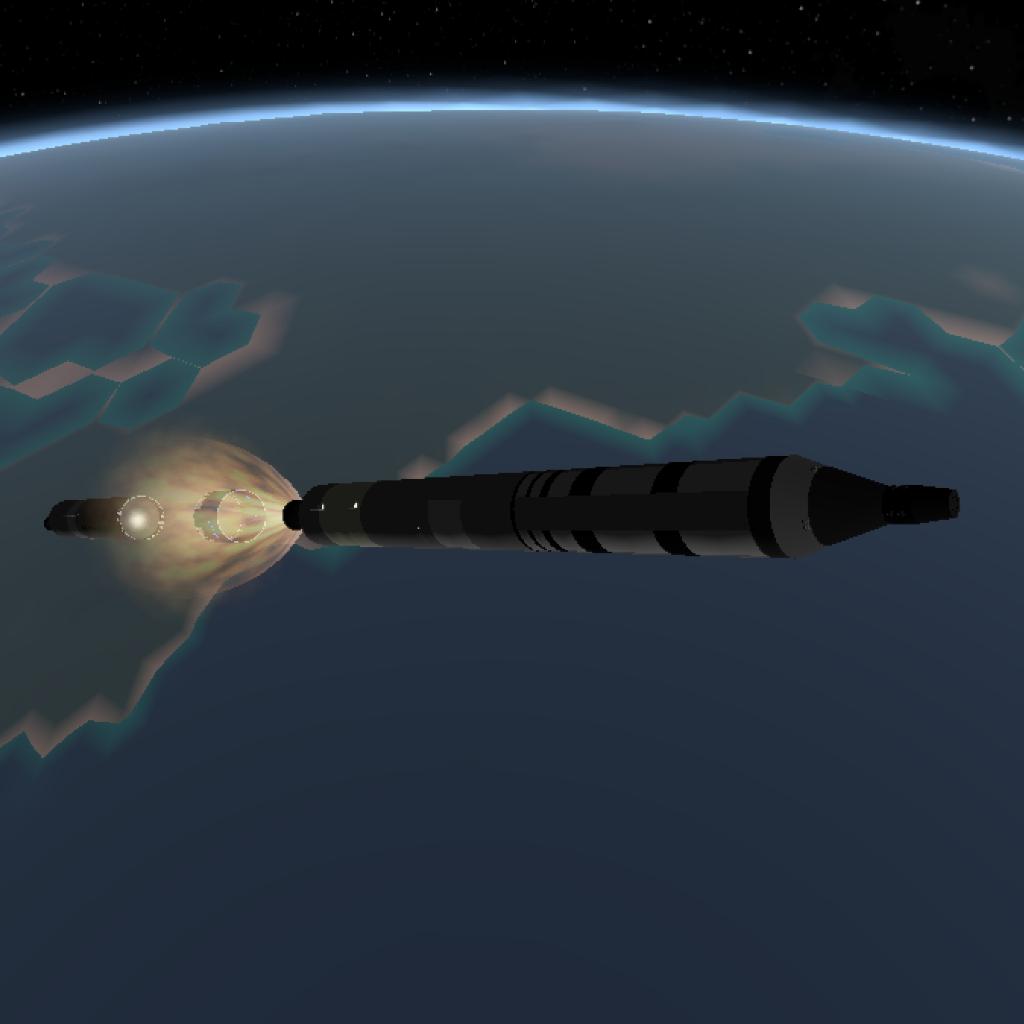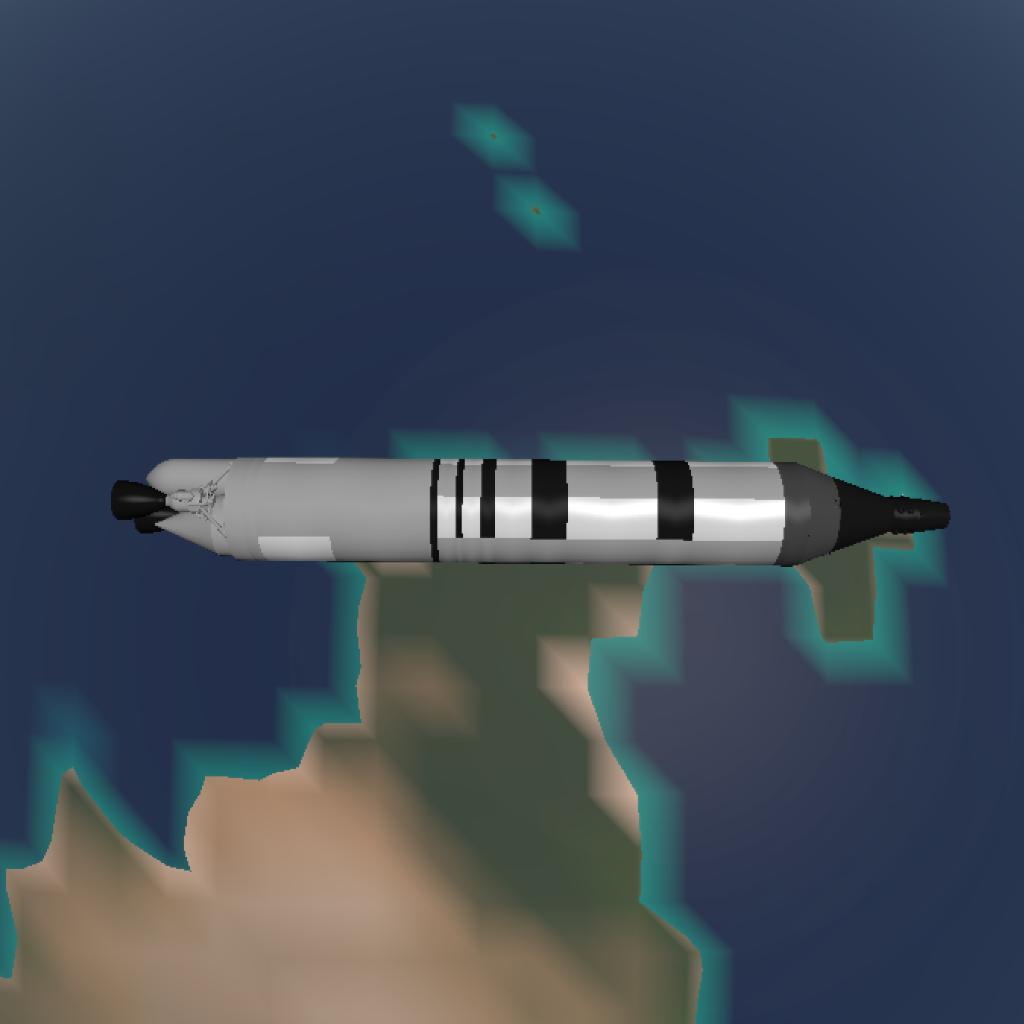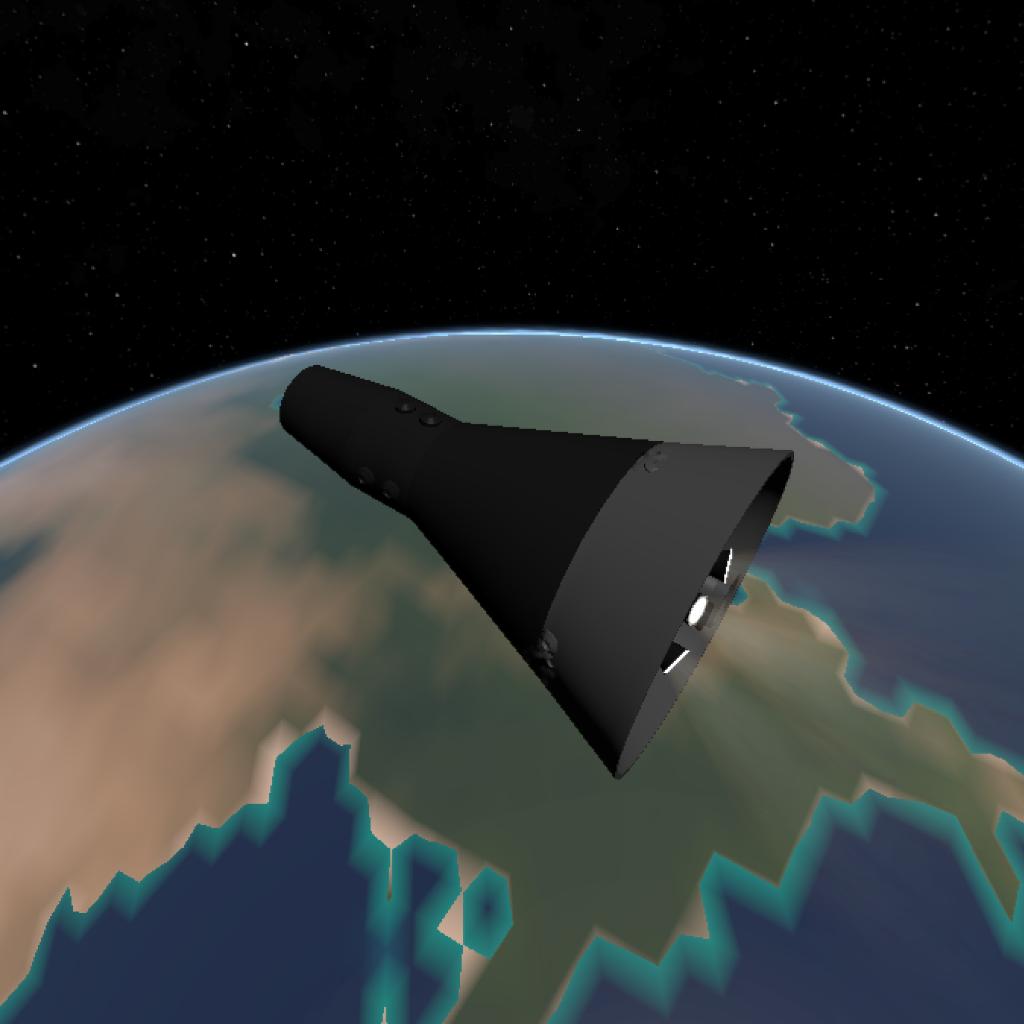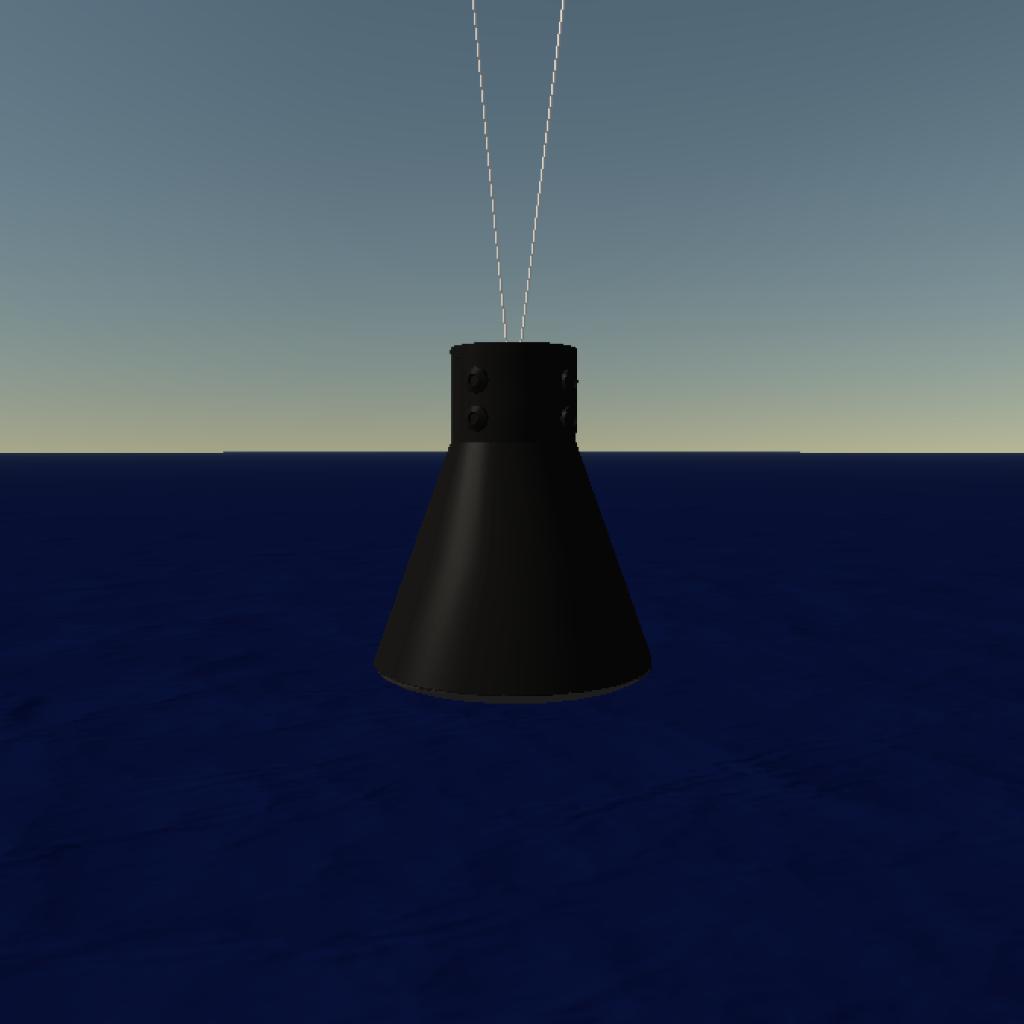
Gemini B
The Gemini spacecraft originated at NASA in 1961 as a development of the Mercury spacecraft, and was originally called Mercury Mark II. The name "Gemini" was chosen in recognition of its two-man crew.[75] The NASA Gemini spacecraft was redesigned for the MOL and named Gemini B, although the NASA Gemini spacecraft was never referred to as Gemini A. The astronauts would fly into space in the Gemini B capsule, which would be launched together with the MOL modules atop a Titan IIIC launch vehicle. Once in orbit, the crew would power down the capsule and activate and enter the laboratory module. After about one month of space station operations, the crew would return to the Gemini B capsule, power it up, separate it from the station, and perform reentry. Gemini B had an autonomy of about 14 hours once detached from MOL.
Like the NASA Gemini, the Gemini B spacecraft would splash down in the Atlantic or Pacific Oceans and be recovered by the same DoD spacecraft recovery forces used by NASA's Project Gemini and Project Apollo. NASA had a paraglider under development[80] to enable a Gemini spacecraft to paraglide to a dry-land touch-down, but was unable to get it working in time for Project Gemini missions. In March 1964, NASA attempted to get the USAF interested in using the paraglider with Gemini B, but after reviewing the troubled paraglider program, the USAF concluded that the paraglider still had too many problems to overcome, and it turned down the offer. The MOL laboratory module was intended to be used for a single mission only, with no provision for a later mission to dock and reuse it. Instead, its orbit would decay and it would be dumped in the ocean after 30 days.


Externally Gemini B was quite similar to its NASA twin, but there were many differences. The most noticeable was that it featured a rear hatch for the crew to enter the MOL space station. Notches were cut into the ejection seat headrests to allow access to the hatch. The seats were therefore mirror images of each other instead of being the same. Gemini B also had a larger diameter heat shield to handle the higher energy of reentry from a polar orbit. The number of reentry control system thrusters was increased from four to six. There was no orbit attitude and maneuvering system (OAMS), because capsule orientation for reentry was handled by the forward reentry control system thrusters, and the laboratory module had its own reaction control system for orientation.
MOL
The Manned Orbiting Laboratory (MOL) was part of the United States Air Force (USAF) human spaceflight program in the 1960s. The project was developed from early USAF concepts of crewed space stations as reconnaissance satellites, and was a successor to the canceled Boeing X-20 Dyna-Soar military reconnaissance space plane. Plans for the MOL evolved into a single-use laboratory, for which crews would be launched on 30-day missions, and return to Earth using a Gemini B spacecraft derived from NASA's Gemini spacecraft and launched with the laboratory.
The MOL program was announced to the public on 10 December 1963 as an inhabited platform to demonstrate the utility of putting people in space for military missions; its reconnaissance satellite mission was a secret black project. Seventeen astronauts were selected for the program, including Major Robert H. Lawrence Jr., the first African-American astronaut. The prime contractor for the spacecraft was McDonnell Aircraft Corporation; the laboratory was built by the Douglas Aircraft Company. The Gemini B was externally similar to NASA's Gemini spacecraft, although it underwent several modifications, including the addition of a circular hatch through the heat shield, which allowed passage between the spacecraft and the laboratory. Vandenberg Space Launch Complex 6 (SLC-6) was developed to permit launches into polar orbit.
From : Wikipedia
GENERAL INFO
- Predecessor: Titan IIIA
- Created On: Android
- Game Version: 0.9.700.0
- Price: $36,577k
- Number of Parts: 524
- Dimensions: 50 m x 9 m x 5 m
PERFORMANCE
- Total Delta V: 30.0km/s
- Total Thrust: 22.8MN
- Engines: 27
- Wet Mass: 3.69E+5kg
- Dry Mass: -114,132kg
STAGES
| Stage | Engines | Delta V | Thrust | Burn | Mass |
|---|---|---|---|---|---|
| 1 | 8 | 1.6km/s | 9.5MN | 87s | 3.69E+5kg |
| 2 | 0 | 0m/s | 0N | 0s | 1.44E+5kg |
| 3 | 1 | 3.8km/s | 1.6MN | 1.8m | 82,003kg |
| 5 | 2 | 2.9km/s | 904kN | 2.0m | 56,872kg |
| 6 | 4 | 21.7km/s | 7kN | 3.99hours | 3,459kg |










wow, great job! your detail is quite amazing. as the old saying goes "the devil is in the details"... like the Gemini MOL with it's transfer hatch in the heat shield. I wasn't sure if it was included until it was time to stage and prep for deorbit... and of course the hatch was there.
why? because you're freakin' @simpleaerospace and you're stuff is awesome. 😎
🤪